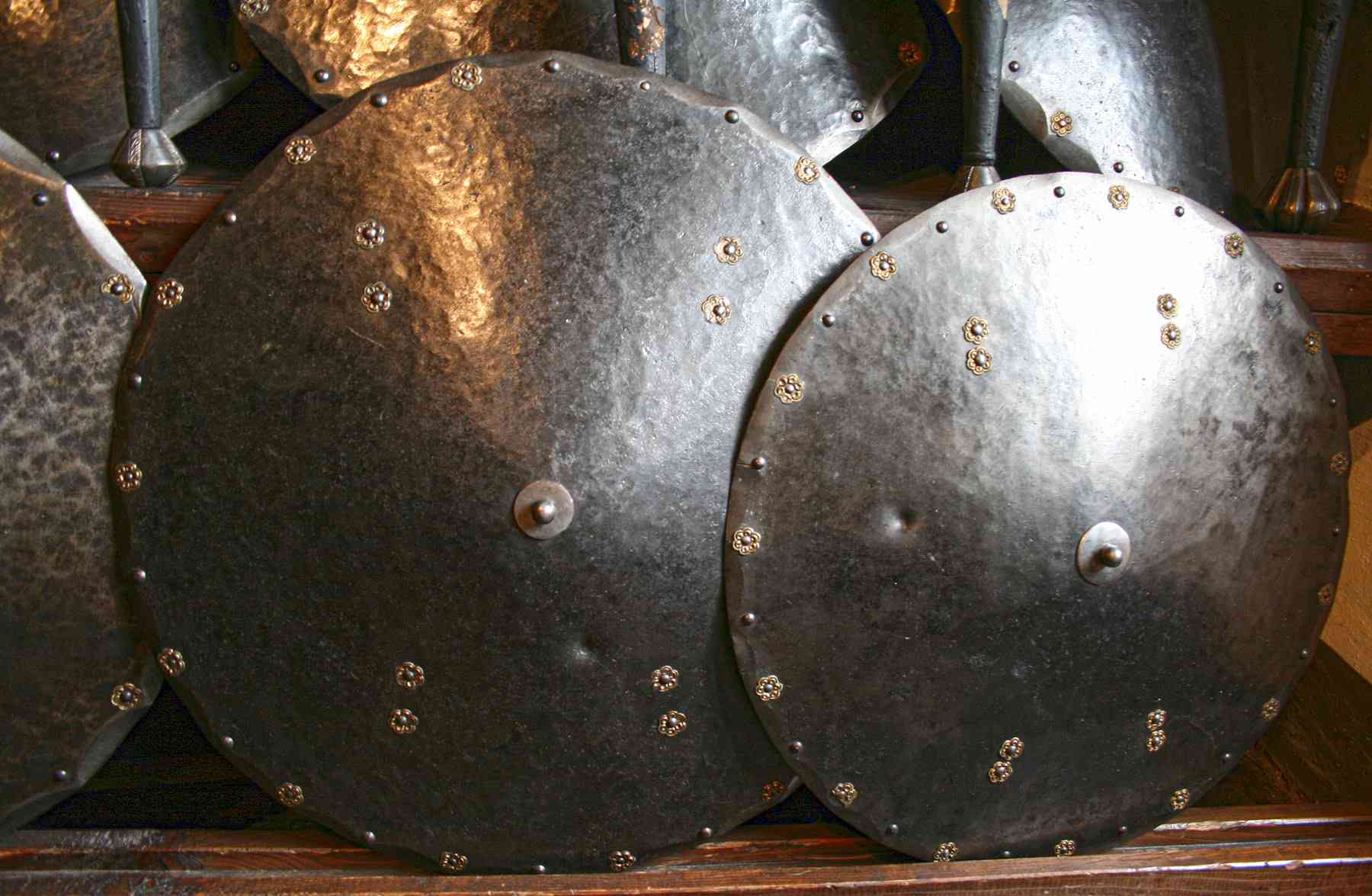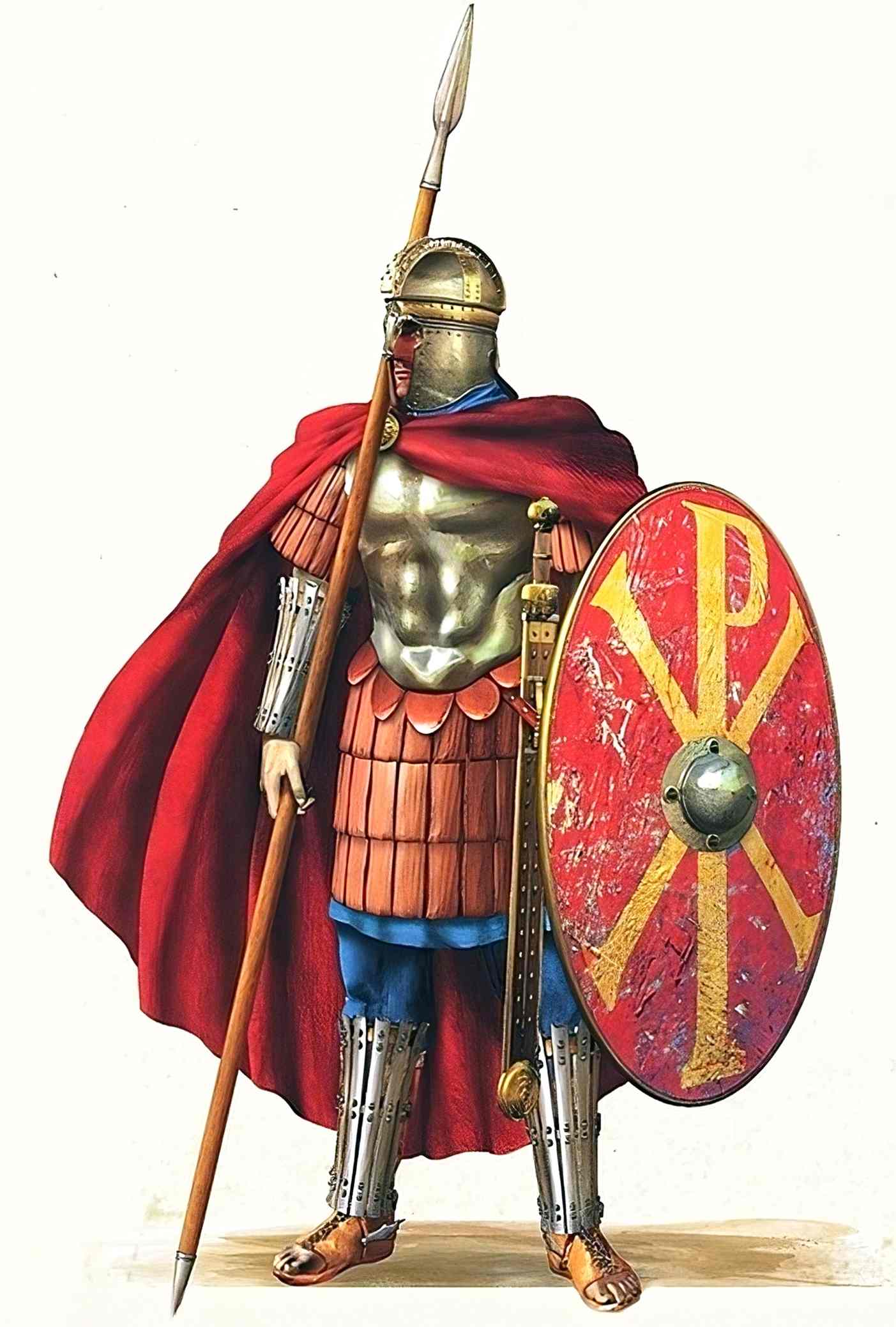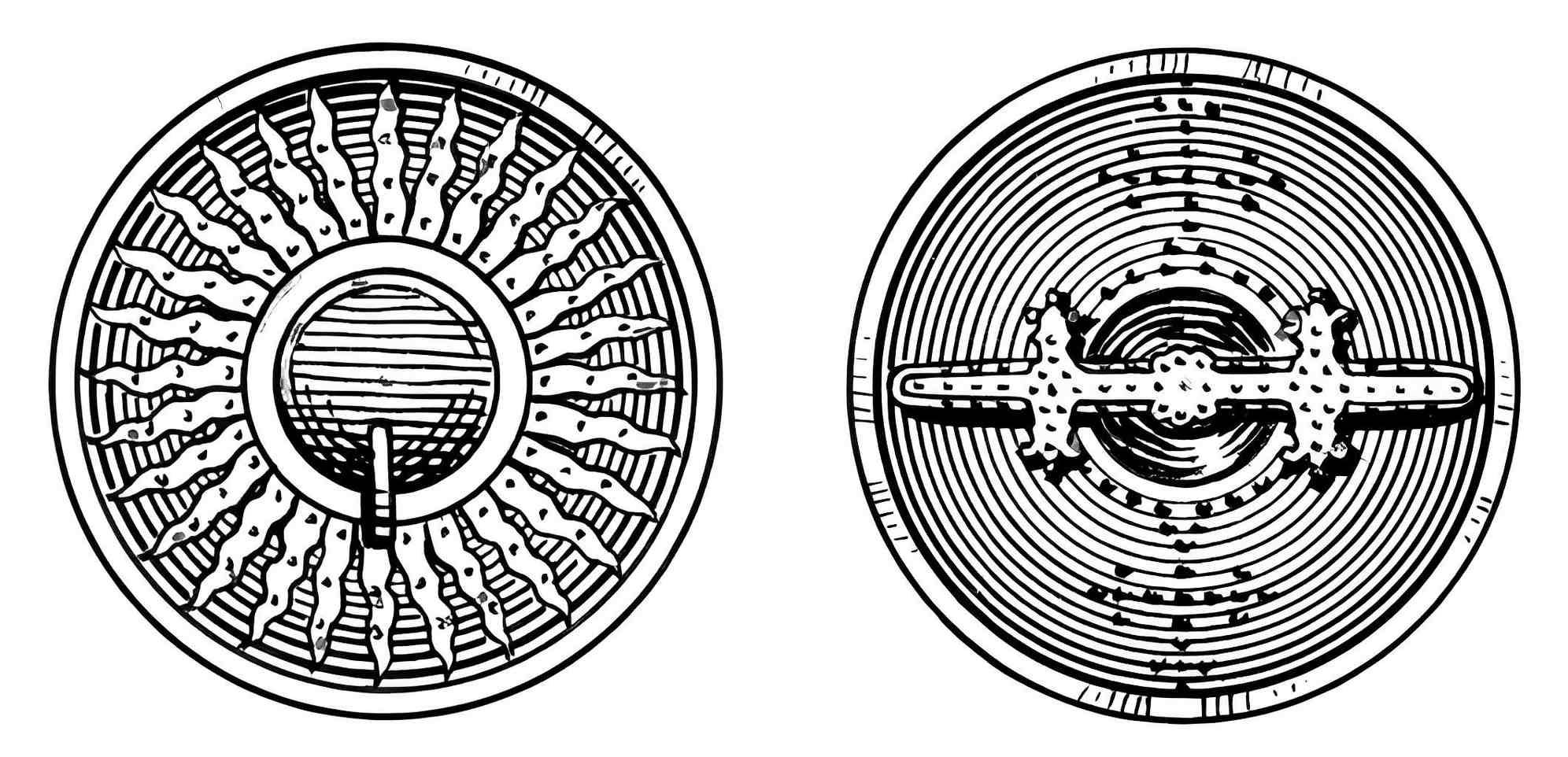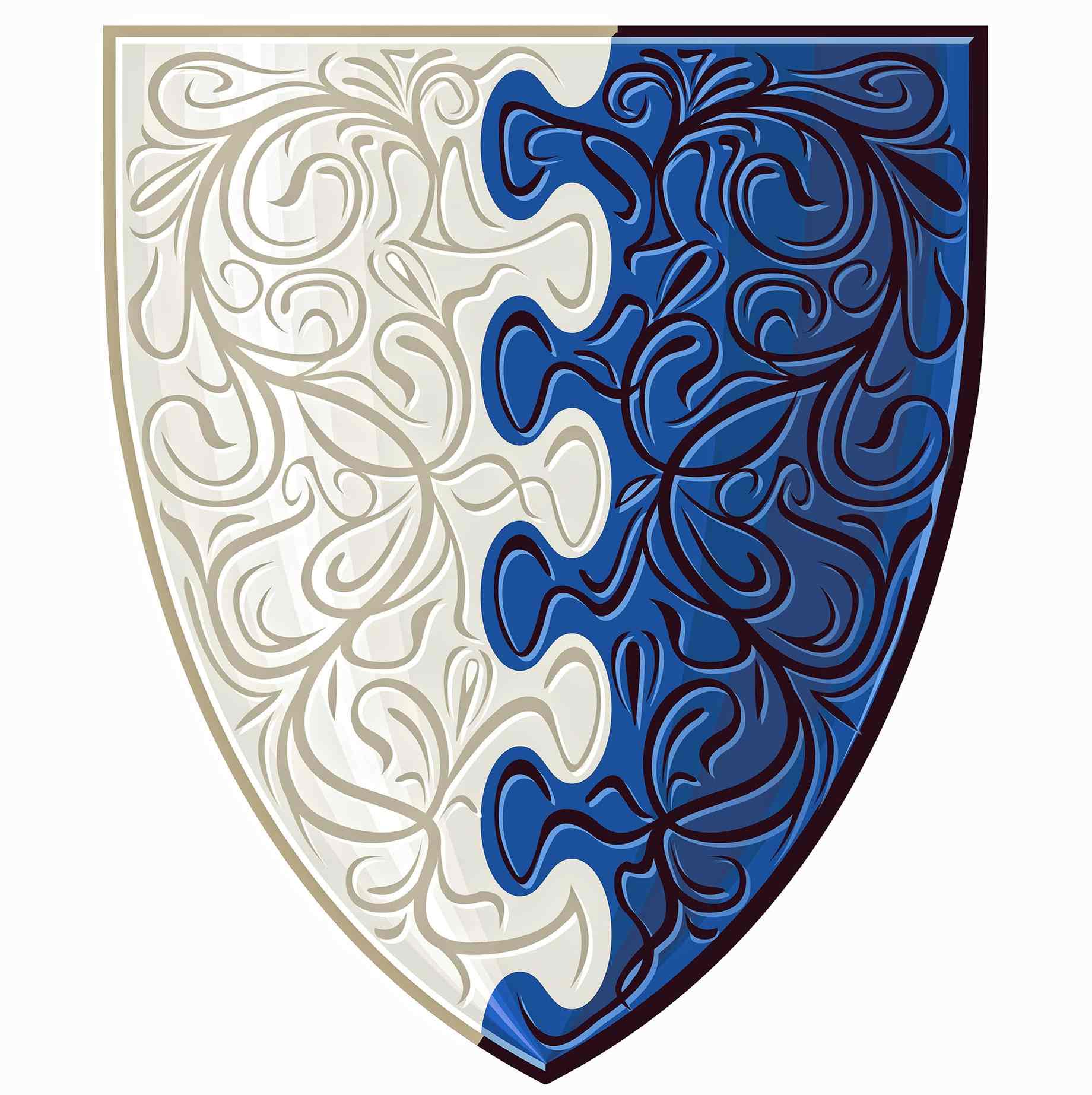The Rondache was a type of curved shield used by European cavalry in the Middle Ages and subsequently by infantry in the Renaissance. It included a lightweight wooden frame with metal nails, overlays, and a central shield boss for reinforcement. A Rondache shield was usually spherical, although it sometimes narrowed toward the base. Between the years 1100 and 1700, European countries developed a wide variety of Rondaches. This cold weapon was also known as the “roundel” shield.
Design of the Rondache
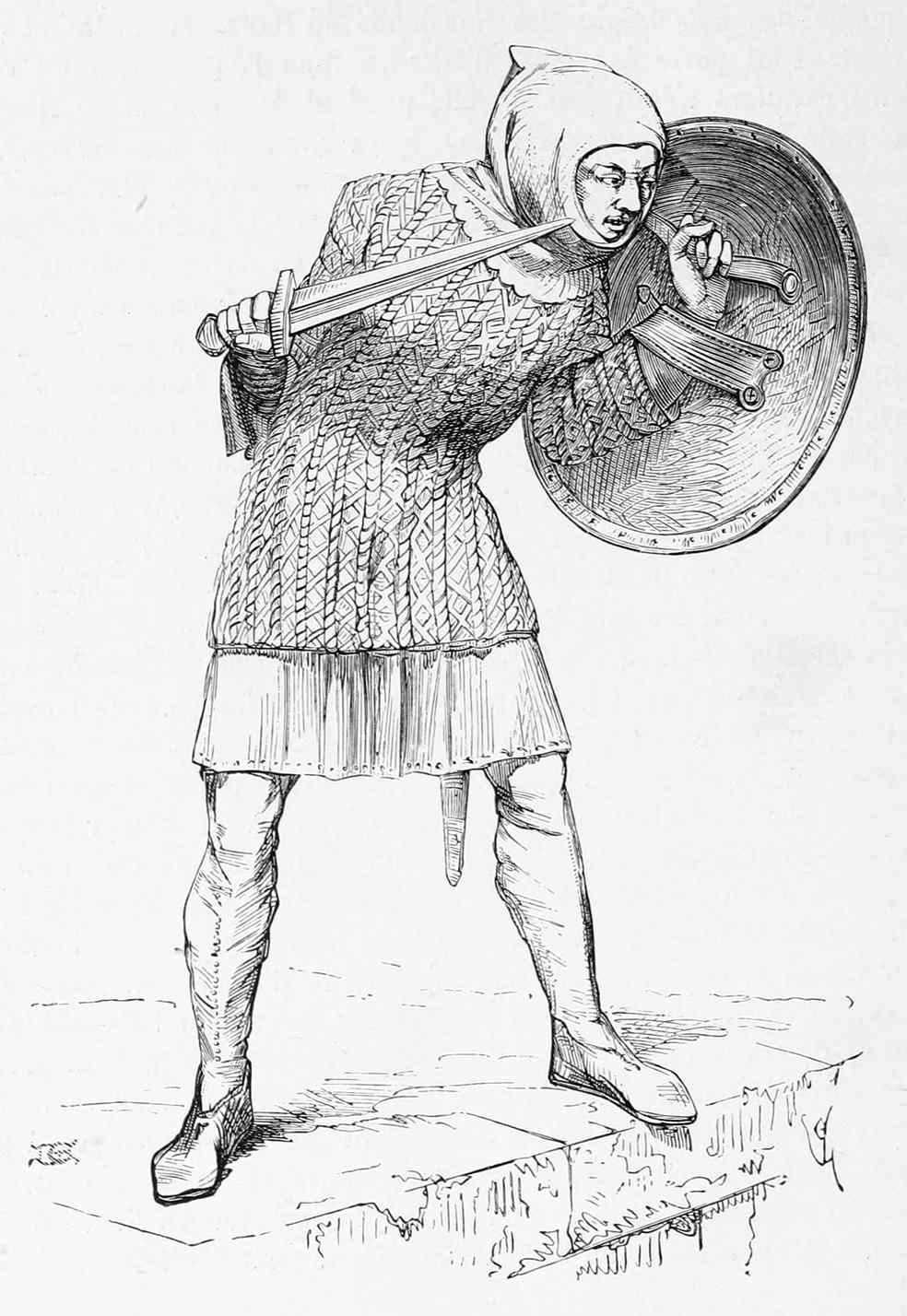
The Rondache was a lenticular shield that was held in both hands and worn on the arm with the help of straps and a handle. This was the standard shield used by children learning to fight or in actual duels. The buckler shield was thought to be the Rondache’s ancestor.
A 24-inch-long (60 cm) Italian Rondache shield was barely wide enough to cover the arm, but it was still larger than the buckler and the targe. Unlike them, it was not held in the fist but rather strapped to the forearm.
The iron blade fastened to the shield’s edge was the greatest feature of a Rondache, making this medium-sized shield a formidable weapon.

Having a defensive tool and an extra edged weapon in one hand gave fighters who used the Rondache shields a decisive edge in battle. It was not uncommon for Rondaches to come with a concealed blade that could be pulled out with the assistance of a spring.
Its planks were composed of light wood and tied together with sinews or ropes; its exterior was leather or metal; and the edges of the shield were packed with nails in a circular pattern. This shield was rarely used on horseback except in East and Eastern Europe.
Most Rondache shields usually measured 20–24 in (50–60 cm) across. However, there were smaller variants, and they were largely utilized for foot combat. At one point, their diameter was cut even further to roughly 12 in (30 cm).
Rondache Shield’s History

Round shields have always been in use, from the period of the Ancient Romans (see Parma Shield) and their contemporaries until modern times in the 17th century.
During the Carolingian Empire (800–888), most shields were typically rounded and constructed of light wood covered with parchment and metal blades on the orle (a metal reinforcement protecting the edge of a wooden shield) and on the domed outer face, with an umbo (a point, cone, or cap jutting from the center of a shield) in the center.
The legs and rivets on this umbo were typically iron, and the facings and orle were both crafted from extremely thin sheets of brass that were delicately embossed and hammered.
Buckler shields were so much more effective than conventional shields that, by the end of the 10th century, Italians and Spaniards had developed a comparable but larger shield for use in battle, the Rondache.
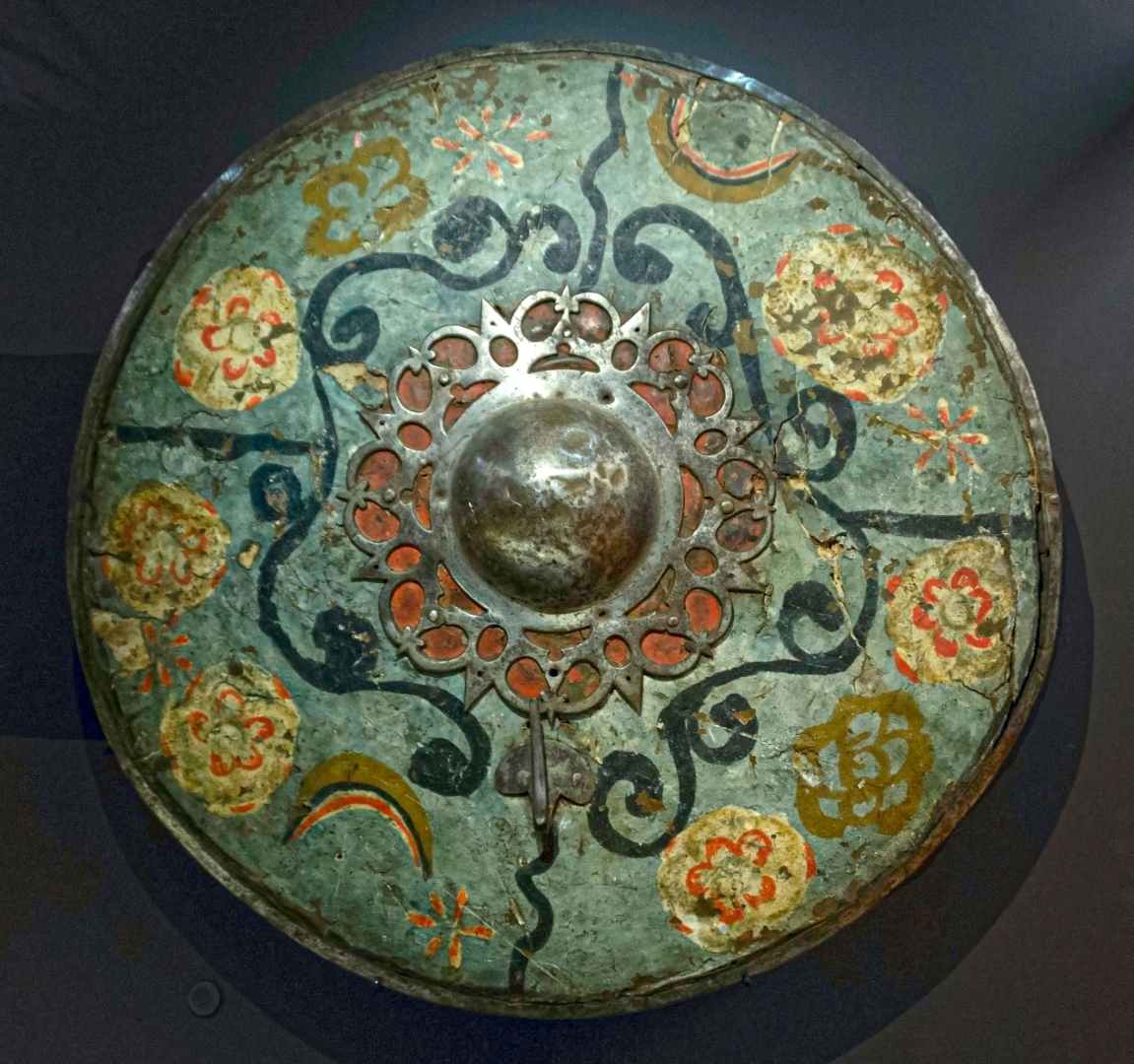
The Saracens under Saladin (1137–1193) used it often throughout the Crusades and the holy wars, as did the Persians, because it was easier to handle this shield with a bow, particularly when mounted.
By the late 11th and early 12th centuries, it was common for round shields like Rondache, with or without an umbo, to be ornamented with a lavish orle.
In the 15th century, the Rondache shield was common among infantrymen in northern Italy. This type of Rondache was both a composite weapon and a shield made out of many other components.
In the 16th century, the fashion returned to larger and highly decorated shields, like the armor of the time, but they were mostly decorative.
Advantages of the Rondache
As weapons became more lethal throughout history, shields became heavier and more durable. At one point, a shield was never deemed complete without passing a test where it could withstand a shot from an arquebus at one hundred paces. Some shields were as heavy as 22 lb (10 kg) at this time.
However, the Rondache’s quality as a fighting weapon stemmed from the fact that it was compact, lightweight, and required little room to launch a strike.
It was built with wood that was 0.2 in (0.5 cm) thick, ribbed steel that was 0.04 in (1 mm) thick, and 0.06 in (1.5 mm) thick iron reinforcements. The shield probably weighed 2.2 lb (1 kg) at most.
Anecdotally, in the 17th century, manufacturers produced bulletproof shields (weighing 11 lb; 5 kg) and gun shields (shields with embedded handguns).
Disadvantages
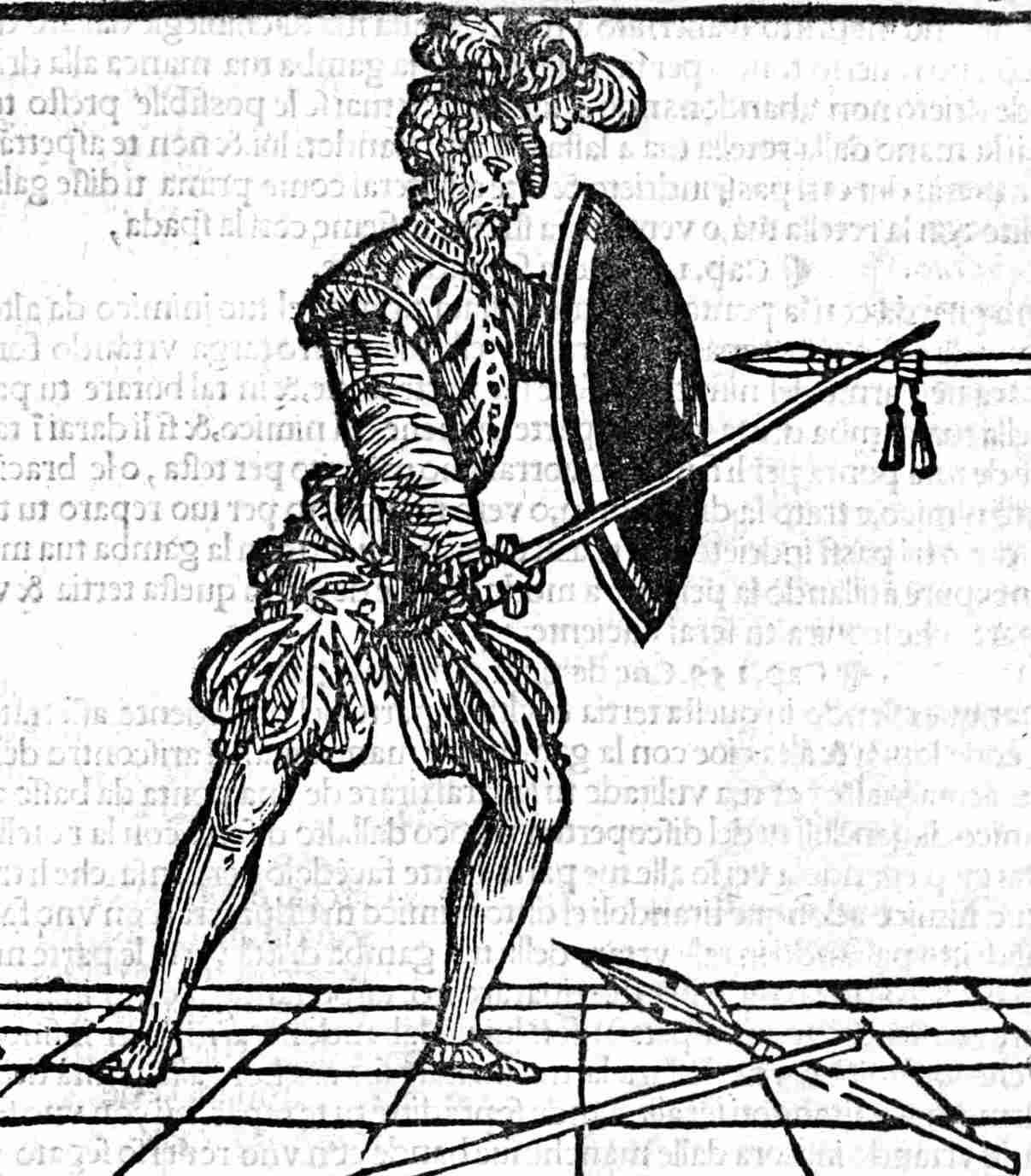
The Rondache shield was less dynamic in battle since it was not held in the traditional fist grip but rather tied to the forearm using a shield harness.
However, strikes to the weapon arm and other forms of active shield action still happened. During an assault, larger shields like this were often held at an angle on the left side of the torso, protecting the sword hand.
The primary strategy with this shield was to try to block the enemy’s weapon with the front edge of the shield without blocking one’s own vision. Troops equipped themselves with such round shields when participating in close combat against polearms or while facing enemy shooters.
As a result of the shield’s widespread popularity in Italy, early conquistadors frequently used the rodela, the Spanish and Portuguese namesake for the Rondache.
The greater thickness and more prominent curvature distinguished the later variants of this Renaissance shield. The bullets from early weapons were better deflected by the later models, and they were in fact bulletproof under certain conditions.
Rondache with an Iron Gauntlet
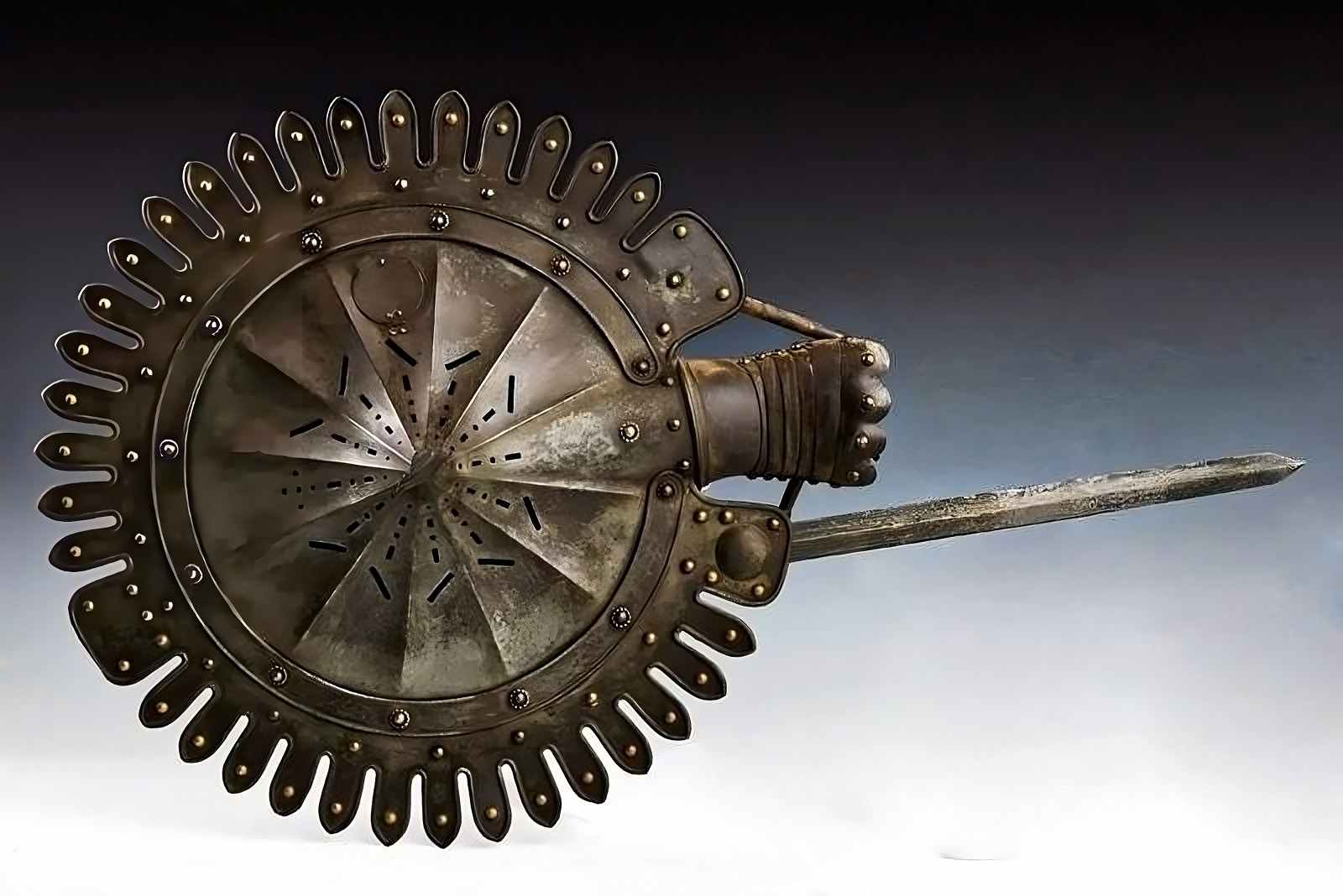
A Rondache was always used with a short sword or side-sword. And it was worn on the arm with straps and a handle. The round Rondache was sometimes fastened to an iron gauntlet. The shield’s circumference was additionally notched to trap the enemy’s swords.
The boiled leather or iron construction and optional blade attachment on this shield were both meant to catch and break the enemy’s sword. This variant never exceeded 12 in (30 cm) in diameter.
When a blade was attached to this gauntlet, it protruded 20 inches (50 cm) from the edge of the shield. It was common practice to attach additional blades and spears to the Rondache shield and its gauntlet (similar to a Russian “tarch”). And many of these blades were serrated, like the flamberge sword.
The Lantern Rondache Shield
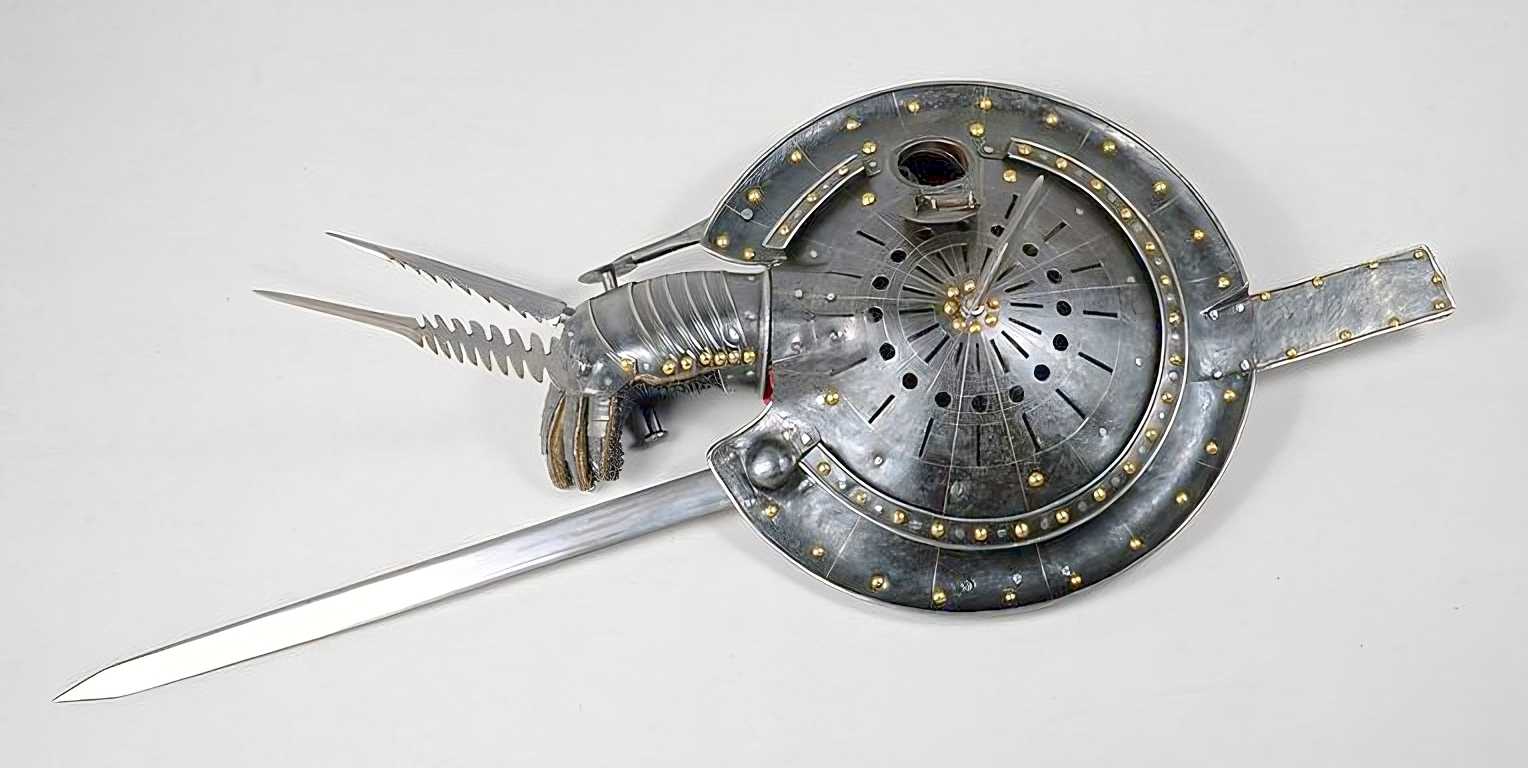
The idea of attacking their enemies at night had always fascinated the Italians and the Spaniards, so they created shields with a circular aperture on top for hiding lanterns. This type of shield was known as the lantern shield.
The aperture, which could be opened or closed with a circular latch, would let the lantern’s light through in a flash, like a tactical light.
In the 16th century, the lantern shield emerged, a hybrid of the earlier Rondache shield, the vambrace (forearm guard), and the knight’s gauntlet. Special notches lined the perimeter of this Rondache to absorb some of the force of a strike.
Attachments for a sword and a lantern could be found on the inside of these shields. The lantern had a slit that could be opened with a cable to let light out. The left hand was the traditional location for the lantern Rondache shield.
According to German-origin historian Pavel Pavlovich von Winkler (1866–c. 1937), the lantern shield was still seen in the trenches during the 19th century:
“In the trenches, fighters still use the Rondache, which has a unique design and forms a kind of bracer. A gauntlet for the left hand is attached to the disk, and beneath the gauntlet, a rapier is fixed to the shield, protruding 50 cm [20 in] beyond its edge. The shield’s circumference is notched to deflect blows. On the inner side of the disk, near the edge, a lantern is attached, and its light passes through a hole; the latter can be opened and closed at will using a round latch. This Rondache undoubtedly dates back to the early years of the 17th century.”
In Popular Culture
- The Rondache shield is a sort of medium-sized shield that appears in many games in the Dark Souls series.
- Rondache is a paladin shield in the famous video game series Diablo.
- This shield is also featured in the Pathfinder (2018) video game.
References
- The Neo-Assyrian Shield Evolution, Heraldry, and Associated Tactics – By Fabrice De Backer · 2016 – Google Books
- Ancient Weapons: The Story of Weaponry and Warfare Through the Ages – By Will Fowler · 1999 – Google Books


